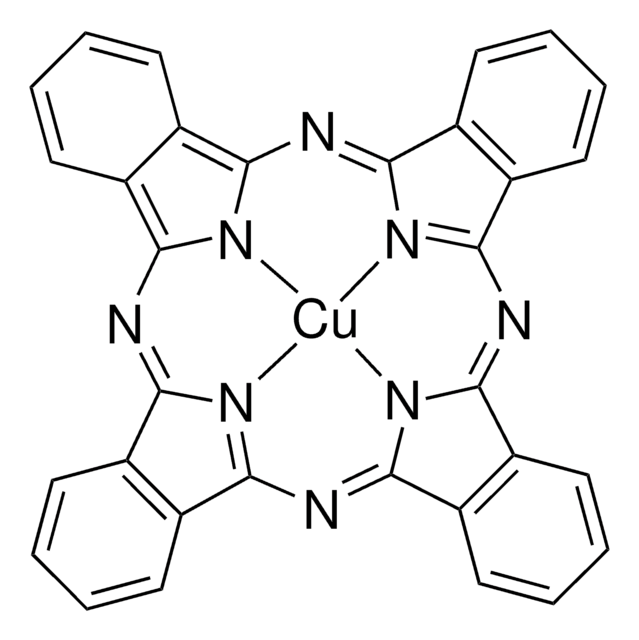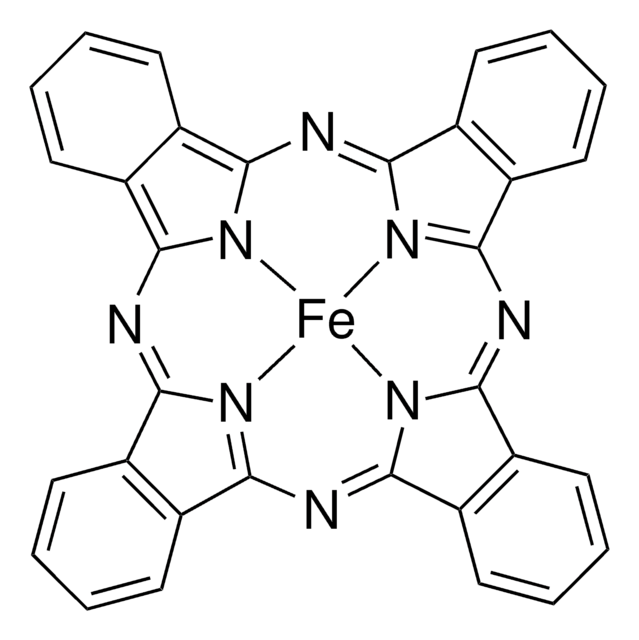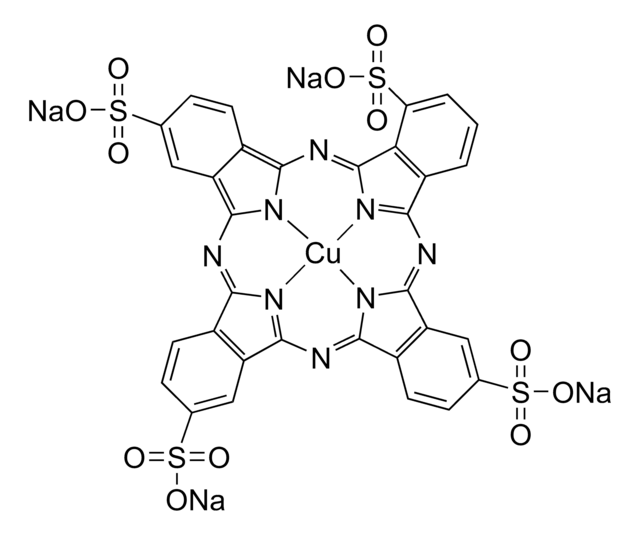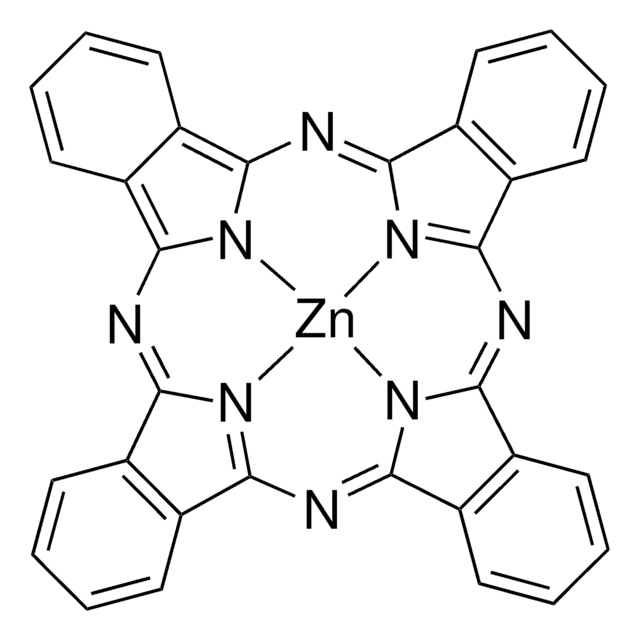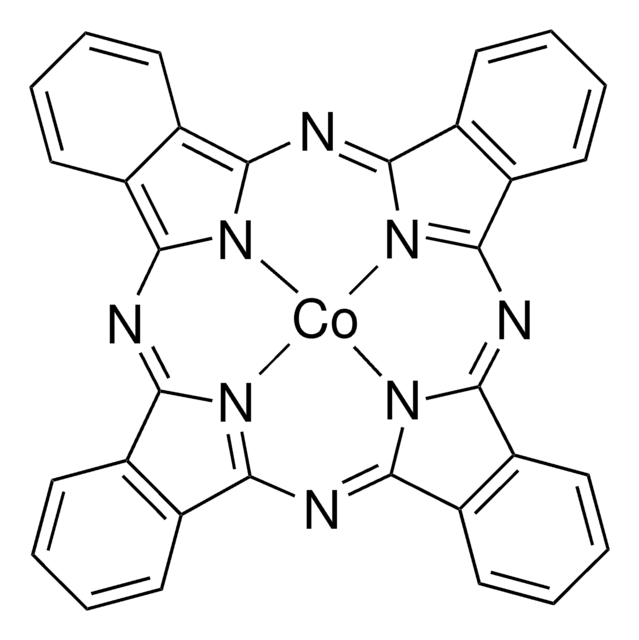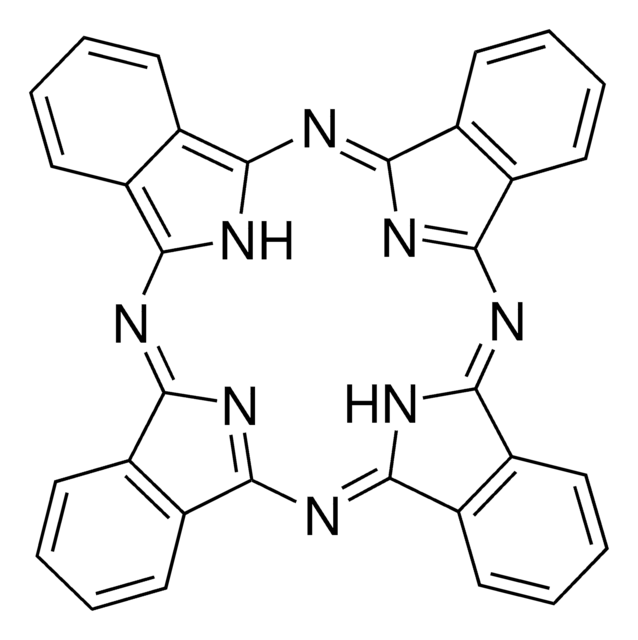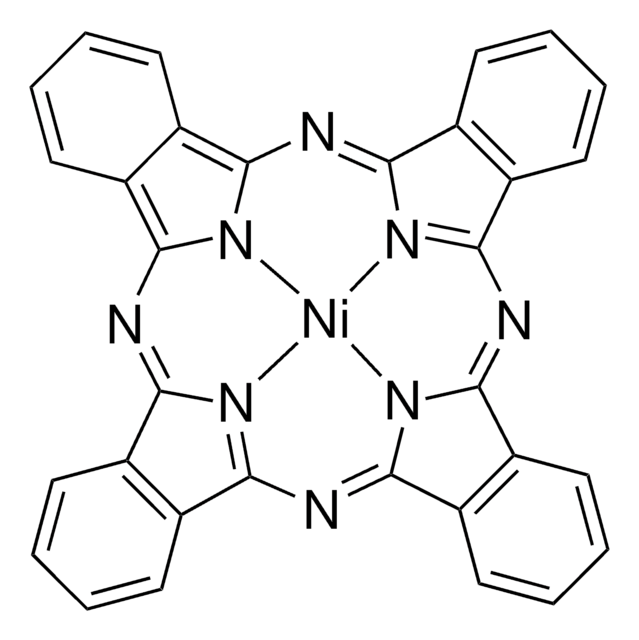推荐产品
组成
Dye content, >99%
质量水平
λmax
678 nm
OLED设备性能
ITO/CuPc/NPD/Alq3/C60/Mg:Ag
ITO/CuPc/NPD/Alq3/LiF/Al
ITO/CuPc/NPD/CBP:FIrpic (6%)/BAlq3/LiF/Al
OPV设备性能
ITO/CuPc/PTCDA/In
ITO/PEDOT:PSS/CuPc/C60/BCP/Al
SMILES字符串
c1ccc2c(c1)C3=NC4=[N@@H]5C(=Nc6n7c(N=C8c9ccccc9C%10=[N@@H]8[Cu]57N3C2=N%10)c%11ccccc6%11)c%12ccccc4%12
InChI
1S/C32H16N8.Cu/c1-2-10-18-17(9-1)25-33-26(18)38-28-21-13-5-6-14-22(21)30(35-28)40-32-24-16-8-7-15-23(24)31(36-32)39-29-20-12-4-3-11-19(20)27(34-29)37-25;/h1-16H;/q-2;+2
InChI key
XCJYREBRNVKWGJ-UHFFFAOYSA-N
正在寻找类似产品? 访问 产品对比指南
应用
- 一种简单的分子工程酞菁铜(II),可作为平面钙钛矿太阳能电池的空穴传输材料,提高性能和稳定性:研究介绍了一种改性酞菁铜(II),可提高钙钛矿太阳能电池的性能和稳定性(Yang et al., 2017)。
- 用于高效稳定钙钛矿太阳能电池的无掺杂甲氧基取代酞菁铜(II)研究:讨论了甲氧基取代酞菁铜(II)的合成与应用,提高了钙钛矿太阳能电池的效率和稳定性(Ding et al., 2020)。
- 基于无金属和含2-苯基苯氧基部分酞菁铜(II)的高效染料敏化太阳能电池研究:研究了用于染料敏化太阳能电池的新型酞菁,重点介绍了它们的合成和光物理特性(Ali et al., 2016)。
- Operando HERFD-XANES和表面灵敏的Δμ分析法揭示酞菁铜(II)在CO2电还原过程中的结构演变:本研究采用先进的光谱技术研究CO2电还原过程中酞菁铜(II)的结构变化(Mei et al., 2022)。
- 新型染料敏化光催化剂:可用于水修复的酞菁铜(II)/TiO2纳米复合材料研究:研究了使用酞菁铜(II)-TiO2复合材料作为水修复的光催化剂,展示了其在光照条件下降解污染物的有效性(Albay et al., 2016)。
储存分类代码
11 - Combustible Solids
WGK
nwg
闪点(°F)
Not applicable
闪点(°C)
Not applicable
个人防护装备
Eyeshields, Gloves, type N95 (US)
商品
Highly reducing or oxidizing species enhance organic semiconductor conductivity by reducing charge-carrier injection barriers.
Professor Shinar highlights low-cost, disposable sensor configurations in organic and hybrid electronics for healthcare applications.
While dye sensitization as the basis for color photography has been accepted for a very long time,1 attempts to use this principle for the conversion of solar light to electricity generally had resulted only in very low photocurrents, below 100 nA/cm
我们的科学家团队拥有各种研究领域经验,包括生命科学、材料科学、化学合成、色谱、分析及许多其他领域.
联系技术服务部门